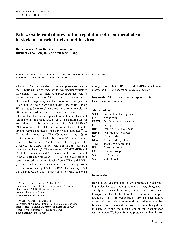摘要
Nitric Oxide (NO) plays an important role in iron redistribution during exercise, while its molecular regulatory mechanism is still not clear. Our present studies were to investigate the effects of NO on iron metabolism and to elucidate the regulatory mechanism of iron transport in skeletal muscle both in vivo and in vitro. One group of male Wistar rats (300 +/- A 10 g) were subjected to an exercise of 30 min on a treadmill for 5 weeks (exercise group, EG, 6 rats) and the other one was placed on the treadmill without running (control group, CG, 6 rats). The cultured L6 rat skeletal muscle cells were treated with either 0.5 mM SNAP (NO donor) or not for 24 h, and their iron release and intake amount were examined by measuring radiolabelled (55)Fe. The results showed: (1) The NO content (CG, 1.09 +/- A 0.18 mu mol/g vs. EG, 1.49 +/- A 0.17 mu mol/g) and non-heme iron in gastrocnemius (CG, 118.35 +/- A 11.41 mu g/g vs. EG, 216.65 +/- A 11.10 mu g/g) of EG were significantly increased compared with CG. (2) The expression of DMT1 (IRE) and TfR1 of EG was increased. (3) The iron intake was increased in L6 cells treated with SNAP (P < 0.01). (4) Western blot results showed the protein level of both TfR1 and DMT1 (IRE) in SNAP cells were up-regulated, while the expression of FPN1 was down-regulated (P < 0.05). The data suggested that the induced elevation of NO level by exercise lead to the up-regulation of both TfR1 and DMT1 (IRE), which in turn increasing the iron absorption in skeletal muscle.
- 出版日期2010-9
- 单位河北师范大学
